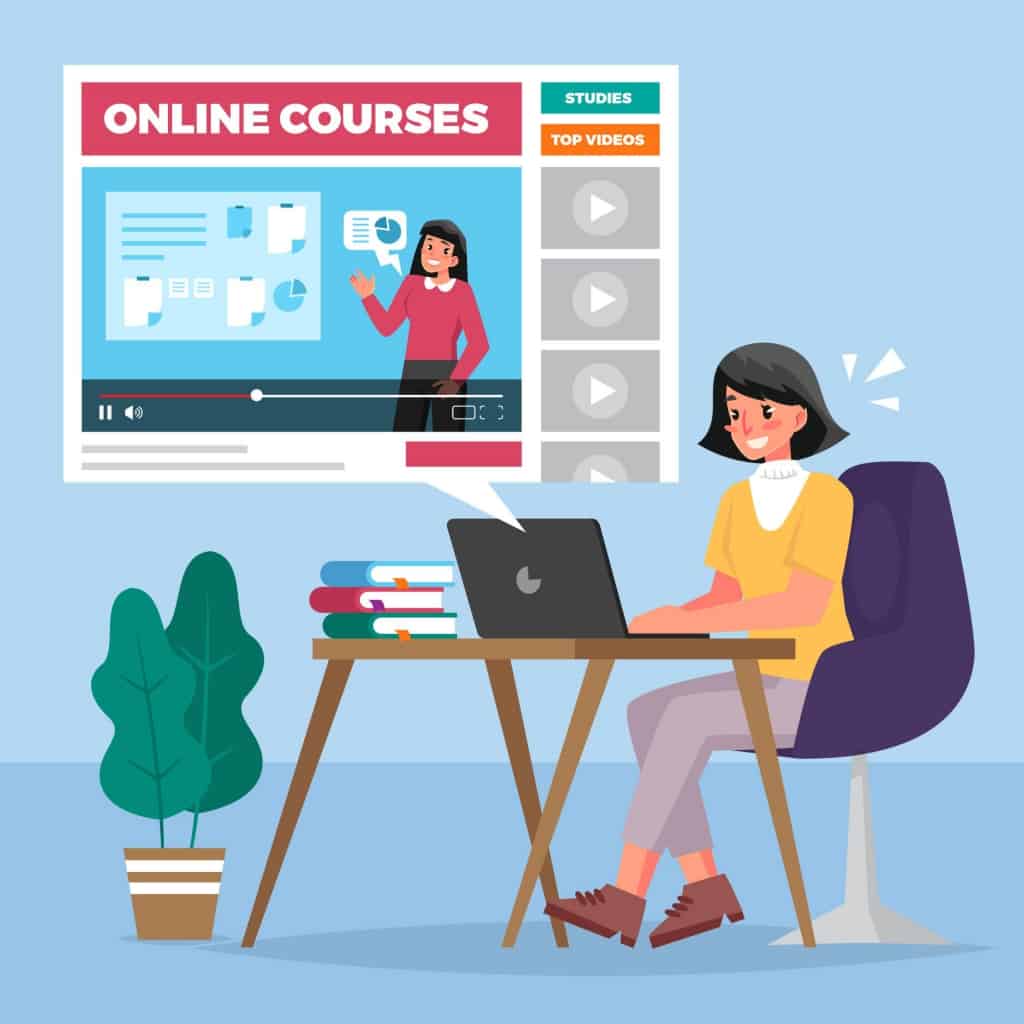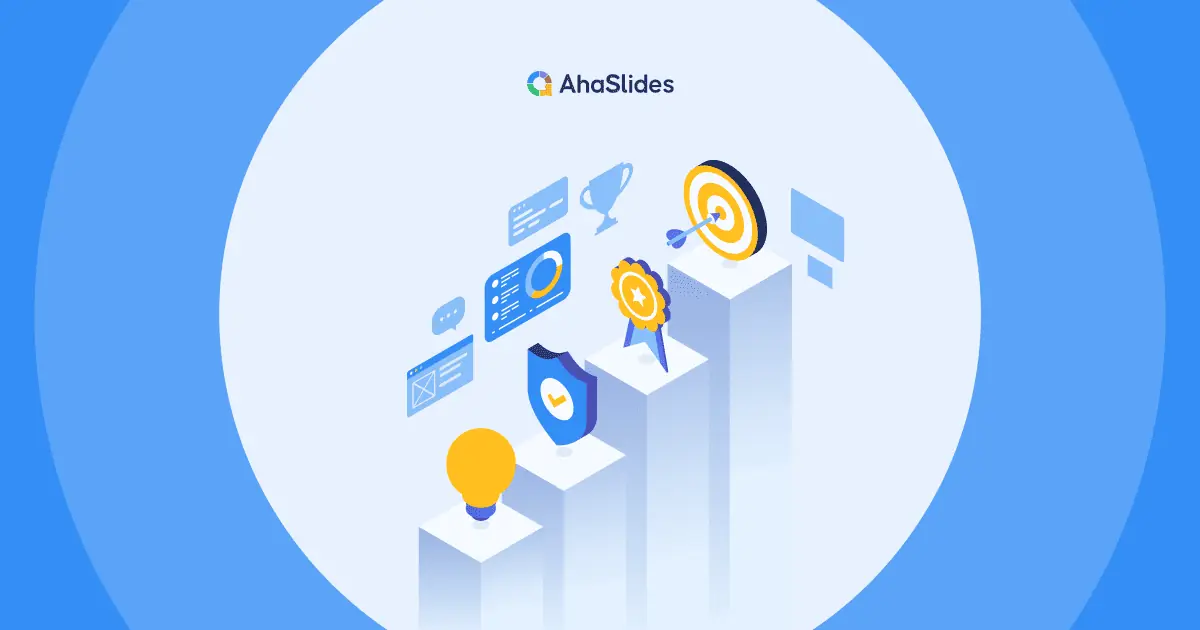Self Paced Learning is a popular approach to online education that has emerged with the advent of technology. Unlike traditional classroom settings where everyone has to follow the same curriculum at the same speed, self-paced learning allows individuals to learn at their own pace. In addition, in this method, learners can access course materials and progress through the course at their convenience.
So, what are the self-paced training methods? is self-paced learning much more effective? Let's know about it with some examples in today's post!
Overview
| What is another word for self paced learning? | Self-directed Learning |
| Who invented Self Paced Learning Theory? | D.R. Garrison |
| When was Self-directed Learning found? | 1997 |
Table of Contents
- Overview
- What Is Self Paced Learning?
- 4 Typical Self Paced Learning Examples
- Self Paced Learning Benefits
- Self Paced Learning Activities At Work
- How to Structure Self-paced Study
- Key Takeaways
- Frequently Asked Questions
Tips for Better Engagement
- Personal development plan
- Leadership development plan
- Training and Development in Human Resource Management
- Soft Skill Training
- Supervisory Learning

Learning at your own pace isn't easy!
Use fun quizzes on AhaSlides. Sign up to take free quiz from AhaSlides template library!
🚀 Grab Free Quiz☁️
What Is Self-Paced Learning?
Self-paced learning means learning at your own pace. As the name implies, self-paced learning is a learning method in which you choose your own pace. This is when YOU get to decide how fast or slow you want to learn, as well as can access resources and finish coursework at your speed without worrying about strict deadlines or schedules.
Self paced online learning is normally through courses, tutorials, and other digital tools. The best part is that it's all up to you - you get to choose what you want to learn and when you want to learn it.

4 Typical Self-Directed Learning Examples
As mentioned above, self paced learning is taking place very popularly in many forms. Here are some examples of self paced learning:
1/ Online Courses
Online courses are probably the most common type of self paced learning. Numerous universities, colleges, and educational organizations provide online courses where students can access course materials, complete assignments, and take exams conveniently.
2/ Professional Development Courses
Professional development courses are available for those who wish to gain new skills, expand their knowledge in a particular field, or grow in their careers. These courses can range from business and leadership skills to technical skills like coding and marketing communications. Many of these are provided by private companies and professional organizations like LinkedIn Learning, Coursera, and edX.
Professional development courses often offer a variety of resources, including interactive lectures, multimedia materials, and online discussion forums. Learners can access these resources at their own pace and complete assessments on their schedule.

3/ Video Tutorials
Video tutorials are another example of self paced learning that provide learners with a visual and interactive way to learn new skills. These tutorials can be found on various platforms, including Tiktok, YouTube, and Udemy, and cover many topics, from cooking to coding.
These video tutorials allow learners to watch and re-watch as often as they need to understand. And learners can go back and review specific sections of the tutorial, pause the video to take notes, or rewind and replay parts of the lesson.
4/ Language Learning Apps
Language learning apps like Duolingo and Babbel are great examples of self paced learning. These apps allow learners to practice their language skills at their own speed, by offering a range of exercises and quizzes that adapt to the learner's level.
The lessons of these apps are also fun, easy to understand, and easy to practice.
Benefits of Self-Paced Learning
There are significant benefits of self paced learning, including:
1/ Flexibility
One of the primary advantages of self paced learning is its flexibility. Learners who choose self paced learning have the freedom to study and complete coursework whenever suitable.
Instead of organising their lives around their education, they can fit their courses around their career, family, or other commitments, whether early in the morning, late at night, or on the weekends.
In addition, self-paced learning allows learners to take as much time as they need to complete a course or program. They can work through the material at their own pace, taking breaks or repeating lessons as required.
Overall, the flexibility of self-paced learning can help learners to achieve their educational goals without sacrificing other important aspects of their lives, such as work or family responsibilities.
2/ Personalization
Self paced learning allows learners to personalize the learning process to suit themselves, which is especially beneficial for some with different learning styles or who may have difficulty with specific topics.
Learners have an opportunity to choose the topic they want to focus on and can skip material they already know or find less relevant. It helps them focus on the areas they are most interested in and customize their learning experience to their way and pace.
On the other hand, self paced learning also helps learners to take control of their learning experiences. With this method, learners can choose when and where to study and can take breaks or re-learn the lesson when necessary. This gives them the confidence to take the time to gather new concepts and work on their skills until they master them.
3/ Self-discipline
With self paced learning, learners take responsibility for their progress and push themselves to complete the course and achieve their goals. That requires both self-discipline and self-motivation.
Self-discipline can be challenging to practice, especially for learners accustomed to traditional forms of education. However, self paced learning can help learners develop self-discipline by giving them the freedom and responsibility to manage their journey.
By developing self-discipline through self paced learning, learners can improve their ability to set and achieve goals, manage time effectively, and stay motivated and engaged.

Self Paced Learning Activities At Work
Self-paced learning activities can be a great way to enhance your professional development at work. Here are some examples of self-paced learning activities that you can do on your own time:
1/ Reading
Reading can be a great way to learn new things and enhance knowledge. You can read books, articles, or blog posts alone.
In addition, reading industry blogs and publications can be a great way to stay up-to-date on the latest trends and best practices in your field and then apply what you've learned to your work.
2/ Writing
Writing will not take too long if you practice it by taking 10 - 15 minutes before starting work. Set aside time each week to write, whether it's a blog post, an article, or a personal essay.
You can also take writing courses online, join a writing group, or find a partner to have more motivation.

3/ Listening to Podcasts
Listening to podcasts on your commute or during your lunch break can be a great way to learn new skills. There are many podcasts available that cover topics such as psychology, business, leadership, and entrepreneurship.
It is a terrific way to stay engaged, inspired, entertained, and improve your mental health.
4/ Taking Online Courses
You can take online courses during your break. These courses will cover a wide range of topics tailored to your specific needs and ability, and classes include everything from technical skills to leadership and management.
5/ Public Speaking
Public speaking is one of the key skills that can be learned independently with the help of AhaSlides.
With our customized template library, you can easily design and create interactive slides for your speech or presentation. You can include interactive features like polls, quizzes, open-ended questions, etc, to engage your audience and improve your deliverability.
In addition, AhaSlides helps you collect real-time feedback and comments from your colleagues or mentors to help review areas that need improvement.
How to Structure Self-paced Study
Structuring self-paced study is essential for effective learning and maintaining motivation. Here's a step-by-step guide to help you create a well-organized and productive self-paced study plan:
- Set Clear Goals: Determine what you want to achieve through your self-paced study. Whether it's learning a new skill, acquiring knowledge, or preparing for an exam, having clear goals will help you stay focused.
- Create a Study Schedule: Design a flexible study schedule that aligns with your daily routine and commitments. Allocate specific time blocks for studying, and be realistic about the amount of time you can dedicate each day.
- Choose Resources: Gather the necessary learning materials, including textbooks, online courses, videos, articles, and practice exercises. Make sure the resources are reputable and relevant to your goals.
- Break Down Subjects: Divide your study material into manageable subjects or topics. This makes the content less overwhelming and easier to tackle.
- Prioritize Tasks: Identify which subjects or topics are most important or challenging. Prioritize your study sessions to focus on these areas, especially if you have time constraints.
- Set Milestones: Break your overall goals into smaller milestones. Achieving these milestones will give you a sense of accomplishment and keep you motivated throughout your study journey.
- Use the Pomodoro Technique: Implement the Pomodoro Technique to enhance your focus and productivity. Study for 25 minutes and then take a 5-minute break. After four cycles, take a longer break of around 15-30 minutes.
- Active Learning: Avoid passive reading or watching. Engage actively with the material by taking notes, summarizing key points, asking questions, and attempting practice problems.
- Regular Reviews: Schedule regular review sessions to reinforce your learning. Spaced repetition techniques, where you review material at increasing intervals, can help you retain information more effectively.
- Self-Assessment: Test your understanding regularly through quizzes, practice tests, or self-assessment exercises. This helps identify areas that need more attention.
- Adjust and Adapt: Be open to adjusting your study plan as needed. If you find that certain resources aren't effective or your schedule needs tweaking, don't hesitate to make changes.
- Stay Consistent: Consistency is key in self-paced study. Even on busy days, try to allocate at least a small amount of time for your studies to maintain your momentum.
- Track Progress: Keep a study journal or use a digital tool to track your progress. Note what you've learned, challenges you've overcome, and areas that still need improvement.
- Reward Yourself: Celebrate your achievements, no matter how small. Treat yourself to something you enjoy after reaching a milestone or completing a challenging section.
- Stay Motivated: Remind yourself of your goals and reasons for studying. Join online communities, study groups, or forums related to your field of study to connect with like-minded individuals.
Remember that self-paced study requires discipline and commitment. While you have the freedom to set your pace, it's important to stay focused, organized, and dedicated to your goals. Regularly evaluating your progress and adjusting your study plan will help you make the most of your self-paced learning journey.
Key Takeaways
Self paced learning offers numerous benefits, such as greater flexibility, a personalized learning experience, and the ability to learn at an individually tailored pace. You can improve your skills, knowledge, and performance by engaging in self-paced learning activities. These activities can develop new skills, and enhance your personal and professional growth.
Frequently Asked Questions
What Is Self Paced Learning?
As the name implies, self-paced learning (or self-directed Learning) is a learning method in which you choose your own pace. This is when YOU get to decide how fast or slow you want to learn, as well as can access resources and finish coursework at your speed without worrying about strict deadlines or schedules.
When you should do self-paced learning?
Self-paced learning is usually done online through courses, tutorials, and other digital tools. The best part is that it’s all up to you – you get to choose what you want to learn and when you want to learn it.
Self Paced Learning Examples?
There are 4 types of Self Paced Learning, including Online Courses, Professional development courses, Video tutorials, Language learning apps
What is Self-directed Learning Theory Based on?
Malcolm Knowles' theory of andragogy.







